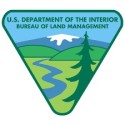 The Bureau of Land Management (BLM) took a critical step forward in ensuring the future of the greater sage grouse today, when the agency released plans to amend nearly 100 resource management plans (RMPs) across the West to benefit the bird. The reveal of 14 environmental impact statements comes after years of federal, state, and local stakeholders working to better protect sage grouse and other sagebrush-dependent species while allowing for energy development, livestock grazing, and recreation.
The Bureau of Land Management (BLM) took a critical step forward in ensuring the future of the greater sage grouse today, when the agency released plans to amend nearly 100 resource management plans (RMPs) across the West to benefit the bird. The reveal of 14 environmental impact statements comes after years of federal, state, and local stakeholders working to better protect sage grouse and other sagebrush-dependent species while allowing for energy development, livestock grazing, and recreation.
The plans announced today take a landscape-scale approach that builds off initiatives like Wyoming’s core area strategy. Improvements include measures to minimize new and additional surface disturbance, enhance habitat, and reduce threats from rangeland fires. In the very best remaining sage-grouse habitat, mining activities will be prohibited. No surface disturbance will be permitted in most priority habitat and landscape surface disturbance caps will go into effect in other areas.
The U.S. Fish and Wildlife Service is set to decide whether to list the range-wide population of greater sage grouse under the Endangered Species Act (ESA) by September 30. The looming deadline has inspired unprecedented coordination among federal agencies, states, private landowners, and numerous other stakeholders. The BLM and the U.S. Forest Service manage nearly two-thirds of remaining sage-grouse habitat. Sportsmen’s groups are applauding the BLM’s new approach and support federal efforts on public lands as a vital foundation for the range-wide conservation of the species.
“The BLM should be commended for their work on these plans and today’s release is yet another step in the right direction for sage grouse, sagebrush ecosystems, and the stakeholders committed to balancing conservation with other uses of the land to achieve a positive outcome,” says Howard Vincent, president and CEO of Pheasants Forever and Quail Forever. “These federal plans, combined with strong state plans and contributions from private landowners through the Sage Grouse Initiative, and other efforts, will hopefully set us up for success in the form of a ‘not warranted’ decision on the listing in September.”
In order to reach this decision, the U.S. Fish and Wildlife Service requires regulatory assurances and conservation measures grounded in the best available science that the agency can ultimately defend in court. “While we still need to review the details, the revised plans appear to have improved the conservation measures and assurances needed to prevent the listing,” says Steve Williams, president of the Wildlife Management Institute and former director of the U.S. Fish and Wildlife Service. “Ultimately, the decision to list the range-wide population will end up in a federal court, and the BLM has taken a positive step forward by producing plans that hopefully can be defensible to a judge.”
As the BLM finalizes their efforts on federal lands, Western states continue working on their own efforts for state and private lands. Some, like Wyoming, have had a strategy in place for years and have already begun implementing conservation measures. Other states have yet to finalize their approach to sage-grouse conservation. “We need the states to finalize their own plans to complement strong federal efforts and keep the momentum and collaboration going,” says Whit Fosburgh, president and CEO of the Theodore Roosevelt Conservation Partnership. “We also need Congress to step up to the plate by funding the federal agencies for long-term implementation and success rather than promoting delays to the process.”
Whether these RMP revisions will be enough to reverse declining sage-grouse habitat and population trends remains to be seen. “The bottom line comes down to implementation of the BLM plans and commitments to sagebrush ecosystem conservation that will actually improve sage-grouse populations,” says Miles Moretti, president and CEO of the Mule Deer Foundation. “We not only need strong conservation plans but also strong commitments and funding to ensure the plans manifest into real conservation actions and long-term improvements on the ground.”
